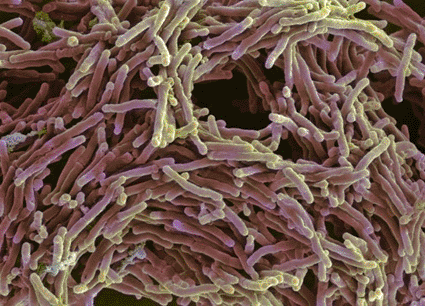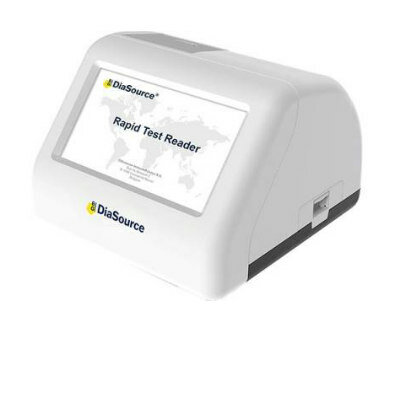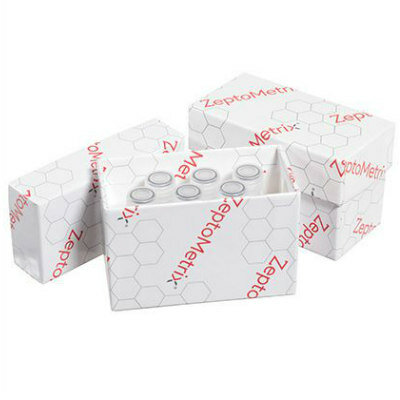Toxic Sugar Buildup Kills Tuberculosis Bacteria
By LabMedica International staff writers
Posted on 29 Mar 2010
Interrupting the biochemical pathway leading to alpha glucan synthesis in Mycobacterium tuberculosis causes the buildup of a toxic precursor that quickly kills the microorganism.Posted on 29 Mar 2010
Investigators at the Albert Einstein College of Medicine (New York, NY, USA) traced a heretofore unrecognized molecular pathway from trehalose to alpha-glucan in M. tuberculosis that comprised four distinct steps mediated in turn by the enzymes TreS, Pep2, GlgE (which was identified as a maltosyltransferase that used maltose 1-phosphate), and GlgB. Alpha glucans are essential for maintaining the structure of the bacterial cell wall, and for generating new microbes through cell division.

Image: Colored scanning electron micrograph (SEM) of Mycobacterium tuberculosis bacteria (photo courtesy A. Dowsett, Health Protection Agency).
The investigators focused their attention on the enzyme GlgE, since there are no enzymes similar to it in humans or in the bacteria of the human gut. As described in their paper published in the March 21, 2010, online issue of the journal Nature Chemical Biology, they used traditional and chemical reverse genetics to show that GlgE inactivation caused rapid death of M. tuberculosis both in vitro and in mice through a self-poisoning accumulation of the precursor maltose 1-phosphate, which damaged bacterial DNA.
"We were amazed when we knocked out GlgE that we saw this DNA damage response,” said senior author Dr. William R. Jacobs, Jr., professor of microbiology, immunology, and genetics at Albert Einstein College of Medicine. "That is usually a very effective way to kill bacteria, when you start damaging the DNA. This approach is totally different from the way any other anti-TB drug works. In the past few years, extremely drug resistant strains of TB have arisen that cannot be eliminated by any drugs, so new strategies for attacking TB are urgently needed.”
Related Links:
Albert Einstein College of Medicine













